#Falls of Bruar
Explore tagged Tumblr posts
Photo

Falls of Bruar by Kyle Bonallo (ig: @kylebonallo)
4K notes
·
View notes
Text

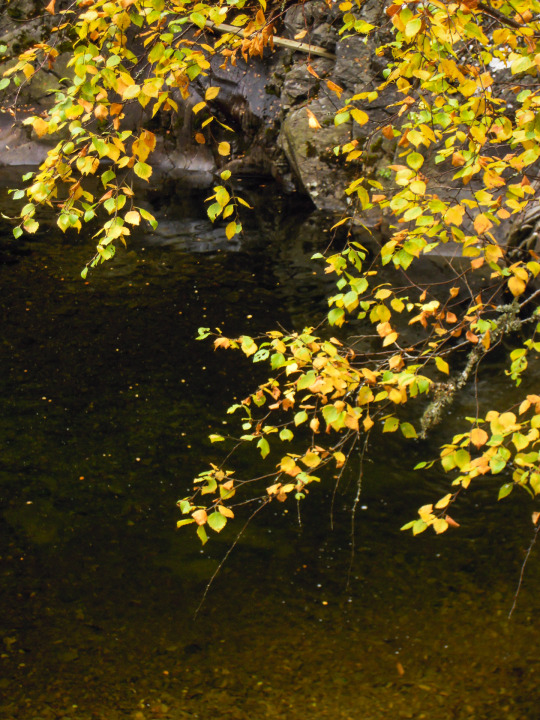
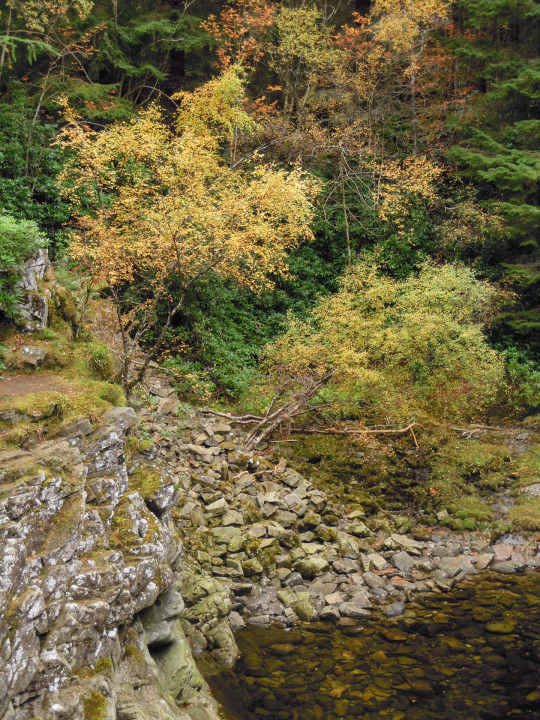

Falls of Bruar, Perthshire, Scotland
25 notes
·
View notes
Text
The Falls of Bruar, Perthshire.
2 notes
·
View notes
Text

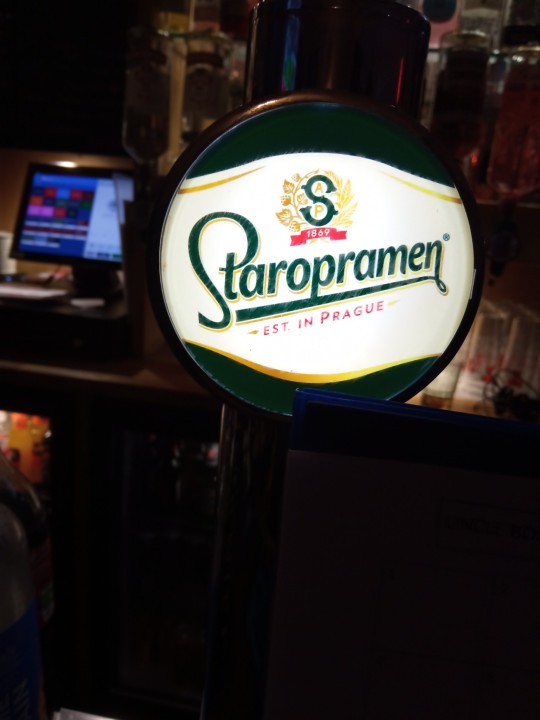


Po prohlídce Falls of Bruar jsme vyrazili směr SZ hledat naše druhé airbnb ve městě Nairn. Michal vklouzl do pravostranného řízení levou zadní (nechci se chlubit, ale řídit jsem ho učil už od 4-5 let, tak to musí být znát) a tak jsem mohl očumovat nádhernou skotskou pahorkatinu. Trochu za zlé mám tomu mojemu klukovi, že mi tvrdošijně odmítal na chvíli přistavit, abych se mohl pokochat. Na jeho obranu ovšem musím říct, že cesta byla opravdu úzká s mírným rozšířením každých cca 1000 m pro umožnění vyhnutí protijedoucích vozidel.
Po ubytování jsme nakoupili něco málo na večeři (krom jiného jsme měli v košíku i pivíčko pro případnou krizi a platit šel Míša a co myslíte - chtěli po něm občanku přesto že je mu 33, myslím, že ji po něm budou chtít i v 50-ti) a vydali se já na beer, Michal jak jinak než na whisky do místního Uncle Bob's baru. Michal okamžitě zapadl a zahájil sbližování skotského a českého lidu (viz fotodokumentace), já bych taky rád, ale nám od mládí na rozdíl ob Michala tloukli do hlavy ruštinu a s tou tady moc nepochodím, tak jen tak sem tam něco prohodím, ale už místní ví, že pijí nikoli beer, ale PIVO 🤓. Za zmínku ještě stojí co že taky ve Skotsku čepují v Uncle Bob's baru - viz jedna momentka.
0 notes
Photo









Falls of Bruar and House of Bruar, Cairngorms National Park
This walk is a classic, especially when you stop by the House of Bruar to get something nice from delicatessen. I bought my mum a scarf for Christmas. A big department store in the middle of the Scottish Highlands is worth seeing at least once in your lifetime, but in my eyes the experience is only completed by taking in the beautiful nature around it and do the full walk around the Falls of Bruar. The snow was just the icing on the cake.
This walk features in my November Vlog.
#house of bruar#falls of bruar#cairngorms#national park#scottish highlands#mountains#scotland#visit scotland#things to do in scotland#waterfalls#snow#hiking#nature#nature photography#landscape photography#nikon photography
116 notes
·
View notes
Text

The Falls of Bruar - Scotland
#scotland#landscape#looks like Norway#trees#autumn appreciation#autumn#autumn leaf#autumn leaves#scottish#scottish landscape#holiday#october#autumn aesthetic#aesthetic#country#countryside#waterfall#falls of Bruar
25 notes
·
View notes
Text
And Now: Monty Python’s How to Recognize Different Types of Trees From Quite a Long Way Away
Nr. 1 The Larch

The Larch.
3 notes
·
View notes
Photo

11.11.2018
Sint-Janshospitaal
Bruges, Belgium
#Belgium#Bruges#sint-janshospitaal#saint john's hospital#canals#water#sunset#autumn#falls of bruar#medieval#travel#photography#student#study abroad
7 notes
·
View notes
Video
Raw Revisited by Tim Haynes Via Flickr: A scene I've retaken a few times and not really managed to replicate the feel of the original. This is perhaps as close as it comes, given the different water level and lighting. Previous attempt: behind the scenes; results.
#beautiful#favourite#vibrant#saturated#manipulated#affinity photo#colour#falls of bruar#water#rocks#geology#nature#landscape#Scotland#highlands#Perthshire#Pentax k-1#HDR
4 notes
·
View notes
Photo

Falls of Bruar by Kyle Bonallo (ig: @kylebonallo)
#nature#landscape#lensblr#original photographers#photographers on tumblr#canon#scotland#photography#travel#vertical#forest#fallsofbruar
915 notes
·
View notes
Text






Falls of Bruar, Perthshire, Scotland
20 notes
·
View notes
Photo




21 January 2017 - The Falls of Bruar, Scotland
This past weekend (20-22 Jan), I travelled up to Alva for my homestay weekend. I stayed with a very nice family and on Saturday our host mom drove us up to the highlands (near Blair Atholl) for a really wonderful hike in the woods. It was so peaceful and a needed change from bustling city life. As well, the mist and fog around the trees throughout the forest created an eery, magical effect (it reminded me of the Danish painter Hammershøi’s nature work).
11 notes
·
View notes
Text

Sketch of the Falls of Bruar and bridge from my recent trip to Scotland. Wish I'd squeezed in more sketch time but I was running around like mad snapping photos.
21 notes
·
View notes
Text










Ráno při loučení s naší první paní domácí jsme dostali tip na zkouknutí Falls of Bruar, poslechli jsme a nelitovali, krása skotské přírody nás nadchla a tak můžete posoudit, jestli je to tak.
0 notes
Photo










Falls of Bruar
The Falls of Bruar walk starts right behind the House of Bruar, a high-end department store in the middle of the Eastern Scottish Highlands. There are two bridges you can pass over, a lower and higher bridge, making it a circular walk of roughly 1 to 2 hours, depending on your pace. I was surprised at just how lucky we were with the weather: plenty of snow and sun made for some great pictures. This is yet another beautiful location in Perthshire worth seeing if you can get there (which is very easy with a car, as there is ample parking space).
The Falls of Bruar in motion on Youtube.
#falls of bruar#waterfalls#house of bruar#scotland#visitscotland#perthshire#scottish highlands#nature#winter#snow#water#countryside#photography#nature photography#travel photography#photographers on tumblr
165 notes
·
View notes
Photo
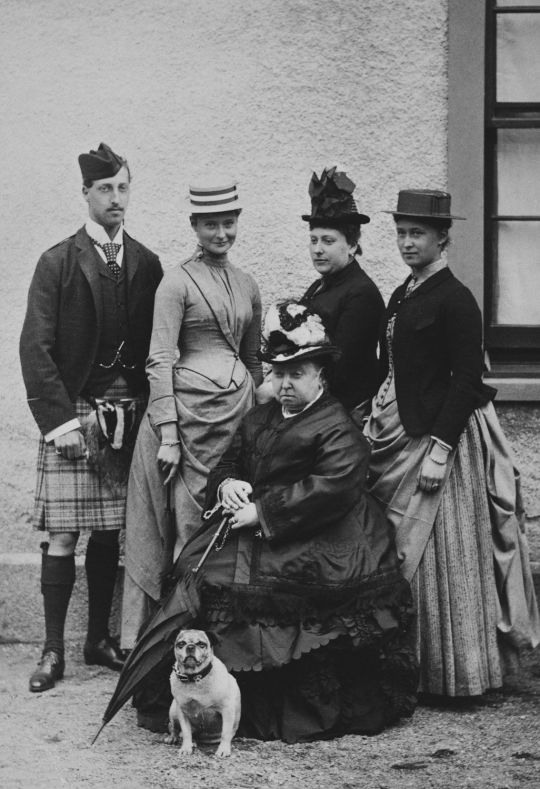
I feel a sort of reverence in going over these scenes in this most beautiful country, which I am proud to call my own, where there was such devoted loyalty to the family of my ancestors – for Stuart blood is in my veins.
- Queen Victoria on Scotland
For a British monarch, Queen Victoria was extremely quick off the mark in making her first visit to Scotland in 1842, only five years after her coronation as Queen. Hooked on the stories of Sir Walter Scott, Queen Victoria toured the country with Prince Albert, spending several days in the capital at Edinburgh.
Then in September 1844 she returned to Scotland with Prince Albert and her young daughter Vicky at her side. This time she visited Blair Castle in Perthshire. They all enjoyed not only Scottish oatmeal porridge but its spectacular fresh landscapes, especially the Highlands, which captivated them both and inspired a rich new adoption of ideas. Later, they took on Highland life in the fullness of its tastes and traditions, something which was recorded in a wealth of artwork, not least in the Queen’s watercolours.
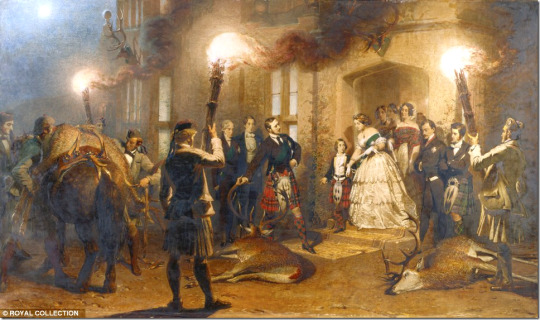
Victoria and Albert loved Scotland so much they inspired a trend for tartan and tweed across the kingdom. They returned over and over again, and after taking possession of Balmoral in 1848 they actually built a castle of their own.
Queen Victoria was a keen diarist and kept detailed records of her stays in Scotland, writing exhaustively about what happened each day: whether Albert’s hunting trips had been successful, who they dined with, her thoughts on the landscape, Highland pony riding, plans for scenes to sketch, details of the people she met, whether she liked them or not.
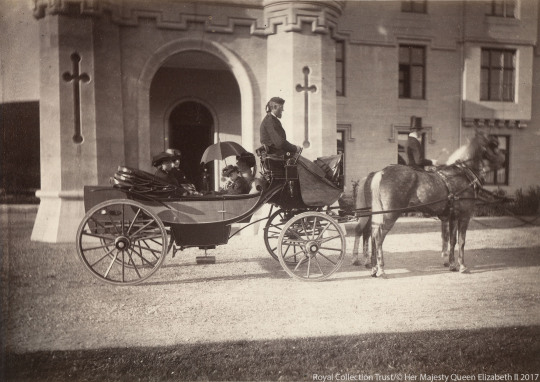
One of the most common urband legends of Victoria’s time in Scotland is that she and Albert got lost in the Highlands and sought shelter and hospitality in a poor family’s cottage.
Queen Victoria certainly never mentioned getting lost in the forest alone with Prince Albert on horseback, as depicted in the recent British drama series Victoria.
Queen Victoria never mentioned being forced to seek shelter with a kindly poor couple who cooked delicious trout over an open fire and let them stay the night, and there’s no record of her hiding her identity as Queen and learning to darn a sock like a “normal” person.
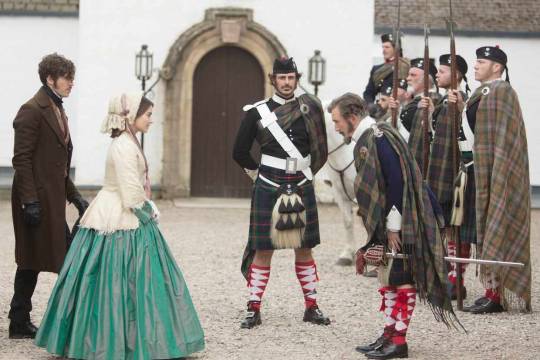
Still – you can see where this fanciful storyline came from. What we do see in her journal is that, for her, the wild Scottish Highlands were an escape from reality.
“After the constant trying publicity we are accustomed to, it is so pleasant & refreshing, to be able, amidst such beautiful surrounding, to enjoying such complete privacy & such a simple life,” she wrote in her diary.
And while and Albert avoided getting lost, they did have an idyllic pony ride accompanied by only one servant – as close to privacy as the monarch could really get.
“When I awoke the sun was shining brightly & it lit up the mountains so beautifully,” she wrote. “At 9, we set off, both, on ponies, attended only by Lord Glenlyon’s excellent servant, Sandy McAra, in his Highland dress, to go up one of the hills.
“We went through a ford, Sandy leading my pony, and Albert following closely, and then went up the hill of Tulloch straight over a very steep cabbage field, afterwards going round zigzag to the very top, the ponies scrambling up over stones & heather, & never once making a false step. The view all round was splendid & so beautifully lit up. From the top it was quite like a panorama.
“We could see the Falls of Bruar, the Pass of Killiecrankie, Ben y Gloe, and the whole range of hills behind, in the direction of Tay mouth. The house itself & the houses in the village looked like toys, from the height at which we were. It was very wonderful. We got off once or twice, & walked about. There was not a house or creature near us, only pretty Highland, black faced sheep.”
She added: “It was the most delightful, and most romantic ride and walk, I had ever had.”

Another time they cut it fine on a pony ride, with the Queen suddenly becoming worried about nightfall – “Got alarmed at seeing the sun sinking, for fear of our being benighted, & we called anxiously for Sandy to give a signal to Albert to come back. At length we got on the move, skirting the hill & the ponies went as safely & securely as possible.”
But they made it home just in time: “A long day indeed, but one which I shall not easily forget.”
And as for visiting a couple of unsuspecting-yet-kindly Highlanders at their cottage?
The only mentions of a “cottage” make clear this is no poor man’s house: “We got out at the Cottage, which is pretty & beautifully situated. There are some good Landseers in the room we went into.” With paintings by Sir Edwin Henry Landseer on the walls this is not exactly a poor man’s hut…
As she prepared to leave at the end of September, Victoria reflected on her time in Scotland: “I am so sad at thinking of leaving this charming place, & the quiet, liberty, & the pure air we have enjoyed. The action life we have been leading, peculiar in its way, has been so delightful.”

Having already lost her beloved husband Albert, Victoria found solace in Scotland and its people. John Brown was famously associated with Queen Victoria.
The Queen first mentioned Brown in her Journal on 11 September 1849, and from 1851 John Brown, at Albert's suggestion, took on the role of leading Queen Victoria's pony. In 1858, Brown became the personal ghillie (shooting guide and gun-loader) of Prince Albert.
After Prince Albert died in 1861, Queen Victoria went into deep mourning, becoming almost a recluse. In 1864, her daughter, Princess Alice, noted that the Queen had always been happy at Balmoral, especially when taking a ride in her pony cart. Why couldn't pony cart rides be made available at Windsor and at Osborne (the Queen's home on the Isle of Wight), with the Queen in the care of the man who so effectively led her pony at Balmoral? The Queen agreed and in December 1864 John Brown became a full-time servant. He was, as Queen Victoria put it in her journal, "indefatigable in his attendance and care".

By 1866 gossip about the relationship between the Queen and her extremely informal servant had started. Brown was the only person around Victoria prepared to "tell it like it was", and he often proved abrasive with members of the Royal Household: even, it is said, on at least one occasion giving the Prince of Wales the rough edge of his tongue. Rumours soon spread more widely, and Brown was featured in the satirical magazine Punch on 30 June 1866, and Queen Victoria came to be referred to by some members of her household (behind her back) as "Mrs Brown".
Speculation about Queen Victoria's 20 year relationship with Brown, following the early death of her husband Albert in 1861, started in court circles almost as soon as the unlikely friendship itself did when the queen was in her mid-forties.
Victoria's daughters joked about "Mama's lover", and the then Duke of Edinburgh (the queen's second son) claimed he had been evicted from Buckingham Palace because he refused to shake the servant's hand.
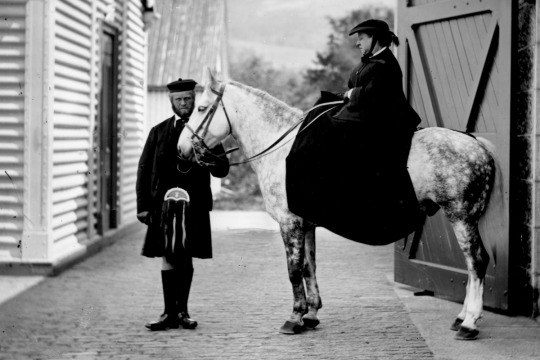
The news of 1866 carried a piece in the Gazette de Lausanne, a Swiss paper, that read, “On dit…that with Brown and by him she consoles herself for Prince Albert, and they go even further. They add that she is in an interesting condition, and that if she was not present for the Volunteers Review, and at the inauguration of the monument to Prince Albert, it was only in order to hide her pregnancy. I hasten to add that the Queen has been morganatically married to her attendant for a long time, which diminishes the gravity of the thing.” Most assuredly, no British paper carried such a tale, but once the word spread of the Queen’s supposed affair, there was no reining it back in.
In the United Kingdom it was Alexander Robertson’s pamphlet “John Brown: A Correspondence with the Lord Chancellor, Regarding a Charge of Fraud and Embezzlement Preferred Against His Grace the Duke of Atholl K. T. of 1873” that first openly suggested that Queen Victoria and John Brown had married morganatically - this being related to, or being a marriage between a member of a royal or noble family and a person of inferior rank in which the rank of the inferior partner remains unchanged and the children of the marriage do not succeed to the titles, fiefs, or entailed property of the parent of higher rank.
Citing one Charles Christie, ‘House Servant to the Dowager Duchess of Athole at Dunkeld House,’ Robertson claimed that John Brown was regularly noted as entering Queen Victoria’s bedroom when the rest of the household was asleep. Robert purported that Victoria married Brown at Lausanne, Switzerland, in 1868, with Duchess Anne standing as witness. The Duchess of Atholl vehemently denied Robertson’s allegations. Robertson went on to make other incendiary allegations without any proof including that Brown and Queen Victoria had a love child which as given up for adoption in Vaux, Switzerland.
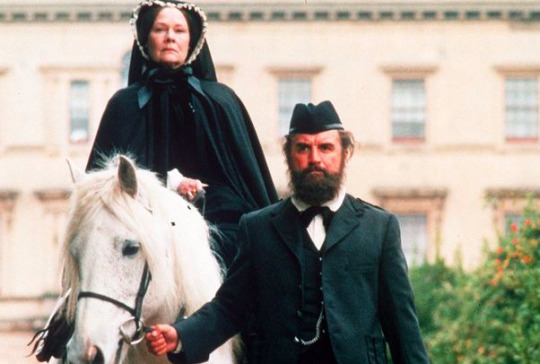
Meanwhile, in our more recent times various newspaper revelations went as far as suggesting that the two had actually married based on newly unocvered letters from Victoria’s courtiers. Indeed a film was even made: "Mrs Brown" became the title of a 1997 film about the relationship, starring Dame Judi Dench as Queen Victoria and Billy Connolly as John Brown.
In 1872 John Brown knocked down a would-be assassin in what was the fifth attempt on Victoria's life. John died at Windsor Castle on 27 March 1883, aged 56, by some accounts because he was too devoted to Victoria. It is suggested that had he taken to his sick bed at the first sign of a chill, he would have survived, but his sense of duty was such that he carried on working until it was too late. He was buried at Crathie.
Were Queen Victoria and John Brown married? Historians are divided over this contentious claim. Those that have believe it have based their views on four pieces of information, none of which is in itself conclusive. But they believe that, when taken together, help swing the balance of probability in favour of a wedding having taken place:
After Victoria's death, two sets of mementos were placed in her coffin, at her request. On one side was placed one of Prince Albert's dressing gowns, while on the other was placed a lock of Brown's hair, along with a picture of him and a ring worn by Brown's mother and given to Victoria by Brown.
The published diary of the Liberal MP, the 1st Viscount Harcourt, for 17 February 1885 related a second-hand story told to his father, the then Home Secretary, by a renowned gossip, that on his deathbed in 1872 the Revd Dr Norman Macleod, the chaplain to Queen Victoria,stated that he had conducted a marriage ceremony between John Brown and Queen Victoria.
The Daily Mail on 2 September 2006 reported a similarly second-hand story in which a late senior member of the Royal Family had said that documents confirming a marriage had many years earlier turned up in the Royal archives at Windsor, and been destroyed.
After Victoria's death (a full 18 years after John Brown's own death), Edward VII tried to destroy everything connected with Brown, including busts and photographs. A life-size statue of Brown at Balmoral, commissioned by Queen Victoria after his death, was only saved by being moved to an obscure part of the estate where Edward was unlikely to find it.

My own view is that it’s a much ado about nothing. Although much of the gossip about John Brown and Queen Victoria was seen as ridiculous steps were taken to suppress information, for instance, when Queen Victoria died her daughter Princess Beatrice removed pages from the queen’s journal ‘that might cause pain” in her own words. People have msiread the intent behind such actions. The Royal family down the ages have always doused more petrol on the fire by simply trying to quell any rumours of impropriety that it invites unfounded wilder speculative tittle tattle.
It is clear, despite public gossip, there was nothing immoral in Queen Victoria’s relationship with John Brown. Queen Victoria would never have contemplated sex with a servant. People forget how rigid social roles really were and how seriously people viewed them in Victoria’s age despite the hypocrisy we have come to see them with.
Furthermore, she was never alone to carry out an affair having court ladies always within shouting distance. That was the whole point of having a royal court and doting ladies in waiting about the place.
The significance of Queen Victoria’s attraction to John Brown was that he - at worst - made a career out of her. He never married, had few holidays and devoted his life to the queen, and he was a walking encyclopedia of her like, dislikes, moods and needs. As a downright selfish person this greatly appealed to the queen. She liked him because she needed to be fussed, cosseted and spoiled. He told her the truth, spoke boldly to her and importantly too; unlike her family and senior courtiers, he was not afraid of her. Above all, when Prince Albert died Queen Victoria needed a male friend — she never really made close friendships with women — and someone to lean on. John Brown supplied all that.

Victoria’s visited Balmoral in her beloved Scottish Highlands in the late autumn of 1900. The Queen could not know it, but it was the last time that she would see the new castle which Prince Albert had erected in her words as his ‘own work… as at Osborne’ and which had become a box of intensely personal memories.
So deeply did the Queen feel her first visit to Balmoral after Prince Albert’s death in May 1862 (in pouring rain) that she wrote with painful dread to her eldest daughter, the Crown Princess of Prussia of the strange reality of everything: ‘Oh! Darling child… the stag’s heads – the rooms – blessed, darling Papa’s room – then his coats – his caps – kilts – all, all convulsed my poor shattered frame!’ (cit., Delia Millar, Queen Victoria’s Life in the Scottish Highlands, 101). Even the Queen’s lonely pursuit of spinning wool, which later became synonymous with her early widowhood, had been a vigorously traditional Highland activity (Ibid, 76). Now her widowhood of waiting was drawing to an end, forty years later, with the Queen’s approaching death.
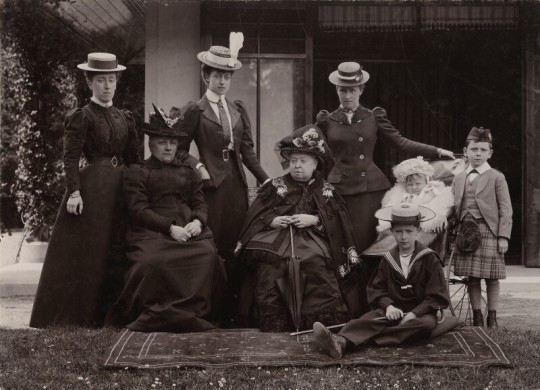
The Queen’s unknowing leave-taking of Scotland took place gradually, over these last days at Balmoral. Touchingly, she was still referring to ‘tea’ – although by now, it consisted only of arrowroot and milk – drinking it at her secluded Highland retreat of Alt-na-giubhsaich. Queen Victoria’s last day included luncheon in Prince Albert’s rooms with her youngest daughter, Princess Beatrice and her Battenberg children. She left Balmoral fittingly, with the weather ‘wretchedly gloomy & dark’ whilst with her, she had a wreath to take back to Windsor, to place on the tomb of the Prince Consort at Frogmore; possibly it also contained the Balmoral heather she loved so much. Perhaps there may have been a presentiment, within the sentimental.

The Queen’s trusted doctor, Sir James Reid was with her at Osborne when she died, so presumably, the Queen would have had the comfort of a Scottish voice at her side, in between her lingering states of consciousness.
After her death, the Prince of Wales spoke a moving sentence of gratitude for Reid’s devoted service: ‘You are an honest straightforward Scotchman… I shall never forget all you did for the Queen’ (read Christopher Hibbert, Queen Victoria: A Personal History, pg. 494).
Significantly, the Queen instructed amongst the many sentimental items to be put in her coffin ‘some of which none of her family were to see’, a photograph of her devoted Highland servant, John Brown, which she ordered to be placed in her left and, with a lock of his hair. These were both tactfully hidden inside a silken case, the handiwork of the Queen’s late wardrobe maid Annie MacDonald, wrapped in tissue paper.
Afterwards, the Queen’s left hand was covered with Queen Alexandra’s flowers. Also put into the Queen’s coffin was a simple sprig of Balmoral heather, which Sir James Reid covered with a quilted cushion – made especially to fit the coffin – to preserve the Queen’s privacy in death.
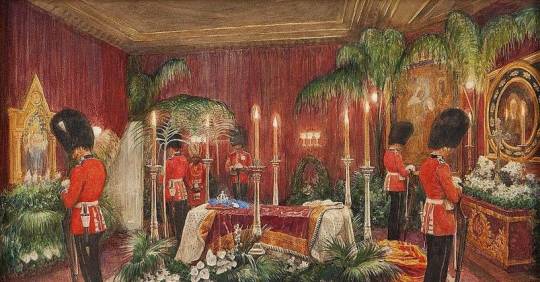
Scotland was at her funeral, in the form of her Highland ghillies, as the Queen’s German grandson, Ernst Ludwig, Grand Duke of Hesse, wrote in his private memoirs: ‘[The moment] when her coffin was lowered in the mausoleum at Frogmore, remains unforgettable to me… I remained a moment there alone. When I looked about me, there were kneeling near me all of her ghillies [Highland servants] from Scotland, all strong, sturdy men, who were weeping there uncontrollably like sons for their mother…’ For her funeral, the Funeral March by Handel was substituted as per the Queen’s instructions, for music by Chopin and Beethoven and importantly, Highland dirges.
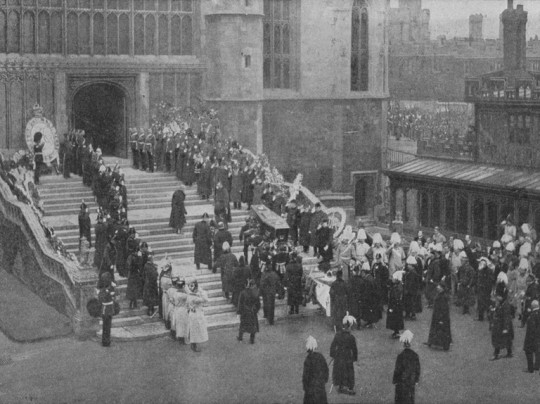
The sarcophagus or tomb chest was hewn from a flawless block of grey Aberdeen granite from the quarries at Cairngall in Scotland. Three attempts were made before this one was successfully carved out and it is purportedly the largest of its kind ever to have been hewn for such a use.

It was an appropriate Scotch bed for the Queen’s final sleep. Upon this sarcophagus, the effigies of Prince Albert and Queen Victoria lie still, a more sublime rendering of their marriage bed, staring into the beyond. Touchingly though, the head of Queen Victoria’s effigy is half-turned towards that of Prince Albert, as if it somehow suggesting that he died before she did. As in life, she is leaning, straining after the beloved husband that she mourned for half of her life.

The fact that their sarcophagus was quarried in Scotland is an appropriate choice for a royal couple who loved that country so much, becoming a little more Scotch with every visit. Appropriately for the Queen, parts of Eastern Central Scotland still celebrate Victoria Day, the last Monday before or on 24 May, Queen Victoria’s birthday.
Scotland was indeed with them, in the end. And continues to be with the House of Windsor.

#queen victoria#quote#monarchy#royalty#scotland#balmoral#queen#prince albert#highlands#tartan#victoria day#john brown#history#british#britain
67 notes
·
View notes